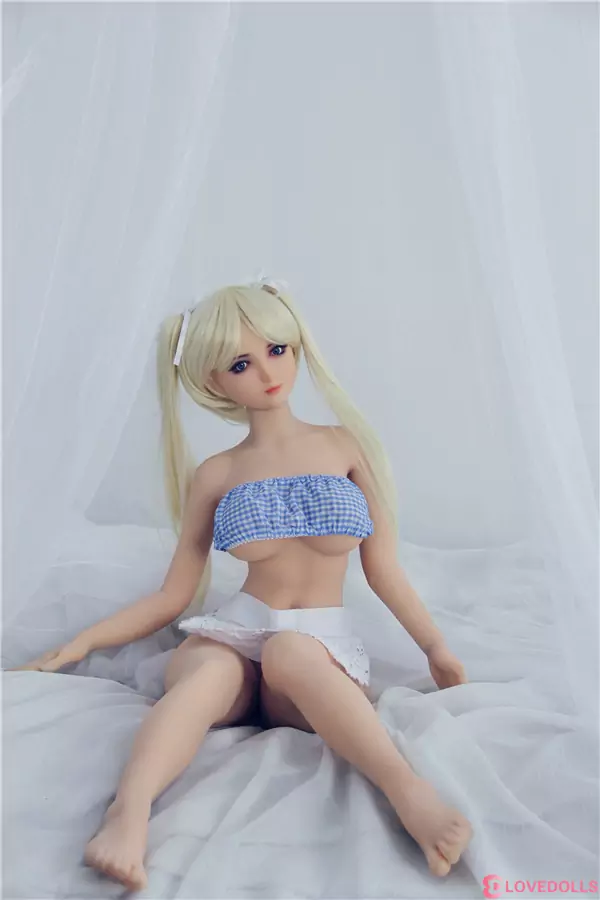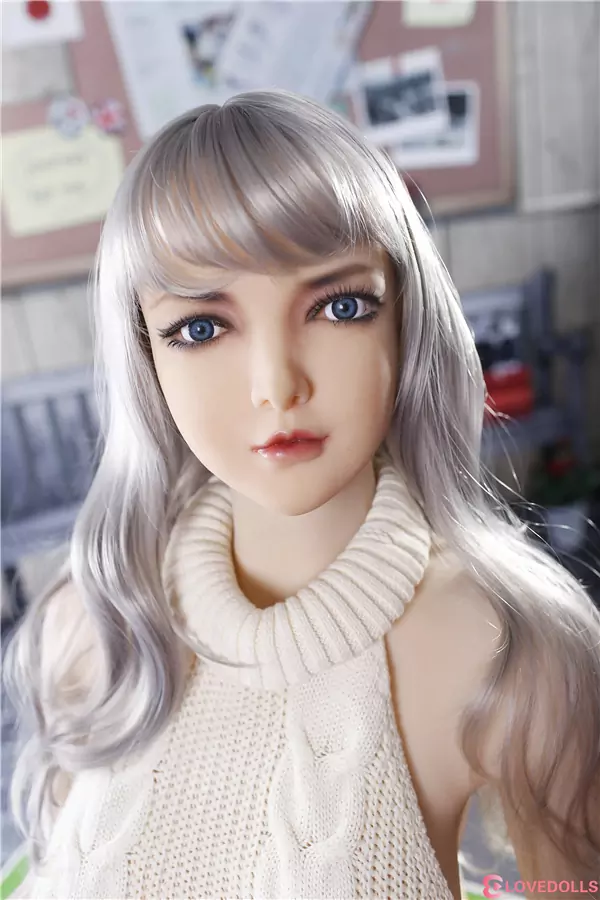adult size solid love doll Relevant Information
(38 People Likes) What kind of doll do Americans like, dashing, fresh and lovely?
was Molly. Her hair was restrained and easy to care for, but not as much of a pain in the derriere to fix if the ribbons came off as Kirsten’s could be. Her eyes were a beautiful shade of gray and her outfits were all absolutely adorable. I also loved her story, about living during the war times and getting to know a new friend. It was a story of learning to live with change and make do with what you had and a story of acceptance despite the differences the girls had. Molly was a realistic character for a nine to eleven year old girl to read about - a little girl whose brothers drove her batty on a daily basis, getting used to a stranger living in her house and having to eat foods she didn’t enjoy so much. My current favorite is 2018 Girl of the Year Luciana Vega. She has the ever-adorable Josefina mold face, her hair is short and straight (very easy for a first time doll owner to care for as opposed to Becca’s curls or Tenney’s hair), and she’s wanting to be an astronaut, so she has the galaxy/outer space theme going on, which makes it very fun to make accessories and clothes for her. My Luciana is currently wearing a beautiful galaxy themed gown and matching jewelry. She’s beautiful and her story is sweet too, a story of learning how to be a team player at space camp isn’t as deep and serious as living in war times, but it is easy for a lot of kids to relate to. As an aside, MaryEllen is also a wonderful doll. She’s unique in that her doll reflects a lot of her story just as she comes, without buying all of her accessories and clothes. —And her legs are two different molds, one’s knee cap is higher than the other as a result of Ellie having a weak leg from a bout of Polio she suffered at seven years old. Her doll is the first in years to so accu
(47 People Likes) TPE Sex Doll Material
ergenic TPE is more affordable to manufacture No nasty latex smell realistic feeling of TPE sex doll material There are many benefits to purchasing a TPE sex doll. To many, the most important feature in a sex doll is a realistic texture that brings sexual fantasies to reality. For that, TPE sex dolls easily reign supreme. With lifelike texture, the sq
(67 People Likes) When we say we carry sex dolls for all sexual preferences
ay we carry sex dolls for all sexual preferences, we mean it. Our Male Sex Dolls provide the same lifelike texture and feel as our female sex dolls. Our high-quality silicone male models can handle rough rides and slow erotic sex t Love Doll match, matching your passion at every turn. With chiseled abs and massive members, our fantasy male dolls can be the man you desire when and where you want them. Shop our collection for your ideal male sex do
(17 People Likes) Are babies (infants) in movies real or props that have CGI constructed onto them (they look so real)?
arms. This may be the actor's arms or the parent’s arms in a wardrobe that matches the actor's, since parents are often able to elicit certain reactions where others cannot. The parent also may be just off-camera in the direction of the desired eyeline of the child in order to draw the child's attention that way, much the same way a portrait photographer will try to encourage a smile for a Christmas card photo. The film crew is ready at a moment’s notice to stop what they are doing and grab a quick shot of the baby crying adult size solid love doll hen it decides to cry, and then the Studio Teacher (a social worker on set by law) will make sure the baby goes back to mom or dad right away. Same goes with laughter or sleeping on camera. Anything besides laugh cry drool sleep or poop is not something a baby will perform. Often, the baby or child’s coverage is shot first, so they can be wrapped for the day and go nap, but this also gives the older actors the ability to play to or react to whatever performance was captured of the infant; in this way sometimes scene blocking or the actor’s “business” as it is called can adapt to whatever the baby did on camera. After all this, you will still notice most small child scenes do not have the world's smoothest editing, and often the baby insert shot or closeup feels (subtly) rushed in composition or lighting compared to the scene around it; you have to work with what you get, right now, no take after take. On multi camera, live audience sitcom tapings, a dummy is almost universally used, and the cooing giggling shot of the baby in arms is a specifically selected clip that was shot and edited beforehand, then played back on cue during tape night. Once in awhile with the camera rolling, lucky timing will yield a particularly useful reaction shot. The child may be reacting to the mother off camera, but that shot is then cut in with the adult actor's performance later so that it seems the child is reacting to the adult character who actually isn't even in the room at the time the child is photographed. The camera coverage of the scene is usually designed so that a dummy baby wrapped in a blanket can be used by the actors during the entire scene to avoid having a child on set. Working hours per day are extremely limited based on age and most projects that have a significant baby or young child presence on-camera will cast twins rather than one child to provide twice as much working time with the other actors… both siblings play the same role. Occasionally, an animatronic or robotic baby is used on camera and of course there are the talking baby dancing baby and other ridiculous baby scenes that use a computer-generated baby not using any real child at all. A film that extensively uses real baby, baby dummy, and CGI baby is CHILDREN OF MEN. There are movies with intense scenes that involve small children and utilize them for more than just an insert shot. These films are few and far between and take a great deal of preparation and flexibility on the part of the other actors the camera crew and the director. The only one that comes to mind right off is the “choice” scene from Sophie's Choice… very young actors, albeit not babies, but pretty easy to remember that scene even 40 years later. In this case, children who are comfortable on camera and skilled at mimicry, or just learned quickly about emotion and reaction, are well-cast natural actors. Even so, scene analysis shows that the daughtet is still shot around a bit and edged out of some s
(93 People Likes) Should parents not give children any money?
and held onto the quarter as if it were something precious. We walked to the corner and went inside. I picked up a pack of Juicyfruit gum. I held out my quarter. The clerk behind the counter took it and gave me two dimes in change (gum was 5 cents a pack back then). I received more coins than I gave -- and I got a pack of gum! I can still remember how sweet it was to chew my very own stick of gum, that I bought with my very own money. This was my first experience with money that was entirely my own. I understood from that first transaction that money was a means of exchange. I understood (after it was explained to me) that more coin doesn't mean anything because twenty cents (two dimes) had less value than a twenty-five cent quarter. I was five years old and I understood that. I also understood, from that first transaction, that if I wanted to buy what I wanted -- instead of what other people wanted to give me -- I would have to save so I would have money of my own. This was important to me because people kept giving me dolls and I wanted an Erector Set. Knowing that Daddy and Mommy worked to earn money, and that I could work and earn 5 cents an hour sorting paperclips (I actually asked them what work a kid could do!) gave me incentive to sort thousands of paperclips. This kept me very busy while my parents cared for my younger siblings. And I felt rich! I saved all my coins for about five years and never bought a thing more expensive than a pack of gum. When the price of gum went up to ten cents a pack, I quit gum. It was my first act of consumer protest. Parents can and should teach children about money, work, and finance at a very young age. Before giving any money, teach the value of coins as soon as a child is able to count with 1:1 correlation to 100, so that there is number sense. Once all of the above are known to a child (numeracy, counting, and the face value of each coin and how to count money), then it is time to establish an allowance. Some parents choose to make chores (work) the focus of earning an allowance so children don't feel money is their right. I don't subscribe to paying children for chores because I want them to know that our home is nice because we all make it that way, together. Nobody was ever paid for housework in my family. We all contributed value to each other and where we live because that's what we do as a family. Instead, during the late 1980s and throughout the 1990s, we gave our children an allowance determined by their weekly expenses at school and in life, and we paid our children extra money in addition to their allowance for doing something we would have to pay someone else to do. If they ran out of money we didn't give them more. They very quickly learned to budget and plan for their own expenses. When they had an expense beyond the allowance alotted, we discussed the expenditure. Was it something that should have been saved-for, in their 'rainy day fund?' If so, we did not pay for it. If it was something education-related, we always paid for it. When we could afford them, books and communication media were and are given whenever a child wants and/or needs it, in my world. Work included real jobs: manually removing snails from plants outside for 5 cents apiece (inflation!) when they were very young, setting up computers, creating letterhead, and brushing my long, wild hair. They soon learned which jobs paid the most! Now they are financially sav

































